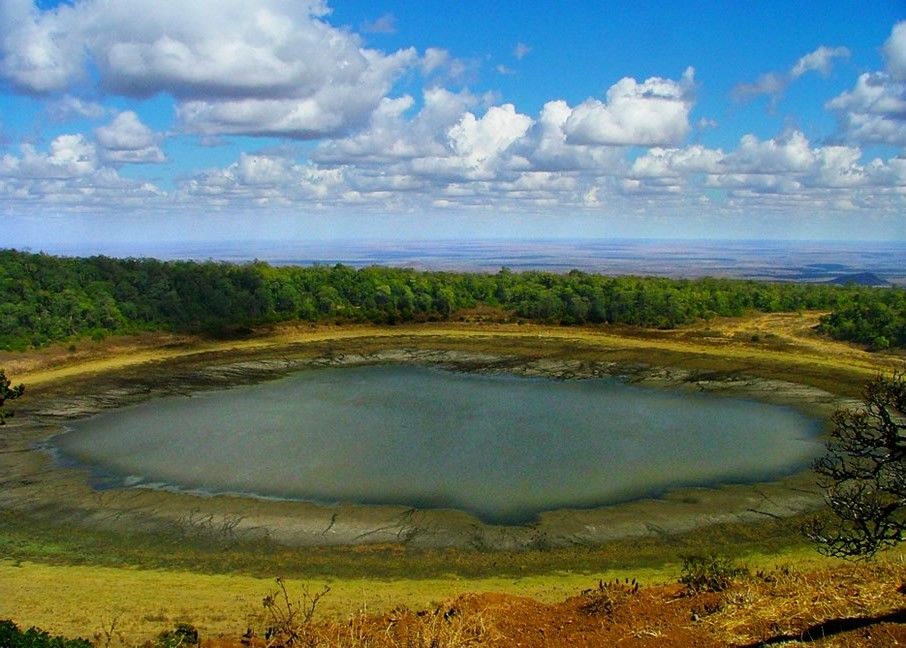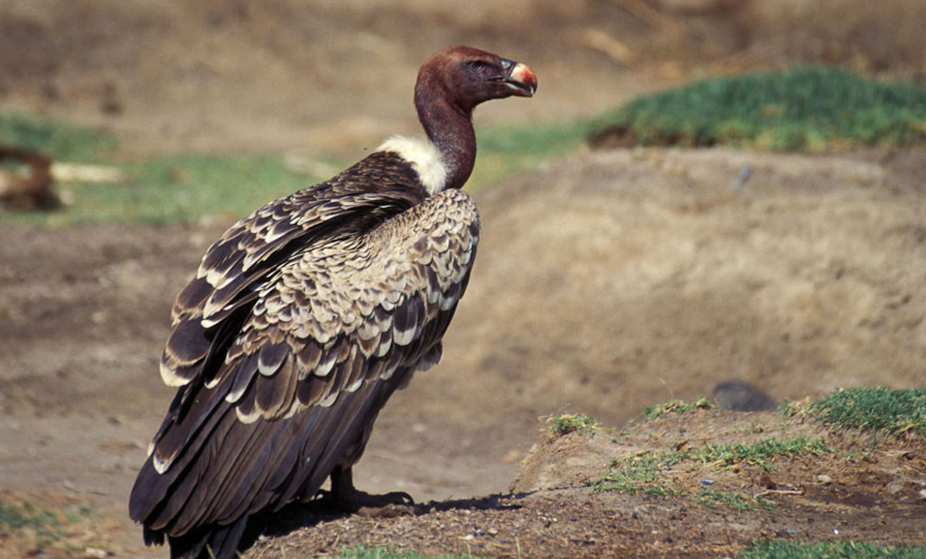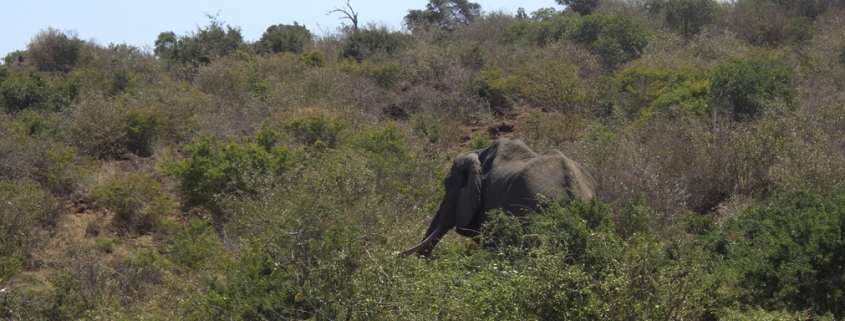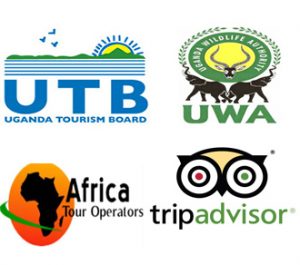Marsabit national park
Marsabit national park is one of the famous and scenic national parks of Kenya situated in the far north region of Kenya in the eastern province which is currently known as Marsabit County with Marsabit as the nearest town, Marsabit national park established in 1949 covers an area of 1,554 square kilometers. Marsabit national park is recognized for hosting a notable population of zebras and bird life, the park is generally hot and dry but its climatic conditions slightly different according to period of time. In the months of January to March it is hot and dry, April to June it is hot and wet, July to October it is extremely hot and dry and November to December it is warm and wet.
Marsabit national park is a remarkable national with numerous tourist attractions which are detailed below
Forested mountain and crater lakes
Marsabit national park is lies on an extinct volcano in names of Marsabit Mountain standing at the elevation of 1,707 meters above the sea level and situated in centre of the park, the volcano rises like an oasis as it is covered by dense forest trees making it the only water source in the region. The forests of the volcano are a home to a variety of forest animals such as elephants, olive baboons, vervet monkeys, blue monkeys, black and white colobus monkey and birds such as masked lark and Somali sparrow and migratory bird species. Bird species in Marsabit national park include African olive pigeon, bearded vulture and many more.
The park hosts many extinct volcanic craters which are referred to as Gofs, Gof Sokorte Guda is the largest crater of all craters and at its bottom it consists of a lake in the name of Lake Paradise. Lake Paradise is a magnificent lake surrounded by forests along its rim and it is an excellent birding site as it hosts a huge population of birds including the rare Lammergeyer. Lake paradise is very scenic that is why it was used in early films and writings of martin Johnson and Vivien and de Wattville.

Wildlife
Marsabit national park is a home to a variety of wildlife species including mammals and primates, the park is famous for being a habitant to elephants with the longest tusks in the world most notably one elephant named Ahmed which was put under surveillance and upon its death its tusks weighed over 300 kilograms. Mammals living in acacia, grassland and forested plains of Marsabit national park include elephants, bushbucks, sunis, aardwolves, caracals, peter’s gazelle, beisa oryxes, stripped hyenas and leopards.
The lower forests of Marsabit national park dominated scrubland are a habitant to a number of primates such as olive baboons, vervet monkeys, blue monkeys, black and white colobus monkey. Among the wildlife to have lived in Marsabit national park is the famous large elephant Ahmed which was provided with a 24 hour protection under presidential order, Ahmed died at the age of 55 and he boasted the biggest tusks to ever be recorded and his body is preserved and displayed in Nairobi national museum.
Marsabit national park is also a home to a huge population of beautiful colored butterflies.
Birdlife
Marsabit national park is generally a forested national park is a haven for birds and a paradise for bird lovers, the park is a home to over 500 bird species including 52 species of raptors, rare bird species such as the bearded vulture, endemic species such as William’s lark, near endemic species restricted to Kenya such as Somali bee-eater, masked lark and Somali sparrow and migratory bird species. Bird species in Marsabit national park include African olive pigeon, bearded vulture, hartlaub’s turaco, Heuglin’s bustard, little grebe, masked lark, peregrine falcon, purple heron, Somali courser and many more.
Migratory bird species are present in the period of November to April.
Safari activities offered in Marsabit national park
Game viewing
Marsabit national park offers excellent game viewing safari experience, game viewing is done while driving through the park in 4X4 wheel car and through the widow of your car and assistance of a guide you spot a variety of animals grazing in the savanna grassland and acacia trees. On this experience you get to spot animals like elephants, buffaloes, giraffe, rhinos, Grevy’s zebra, bushbucks, sunis, aardwolves, caracals, peter’s gazelle, beisa oryxes, stripped hyenas, leopards and many more.

Marsabit national park offers game viewing experience is sessions that are morning game viewing, full day game viewing and afternoon game viewing. Game viewing in Marsabit national park is great throughout the year but the best game viewing experience is done in the dry seasons months that is from June to September, in this period the animals are easy to see as they congregate around crater lakes to drink water due to thirsty and the vegetation cover is short giving you an easy view of the animals.
Camel rides
Camel rides is one of the most ecologically friendly way of touring the plains of Marsabit national park without emitting fumes and noise, this safari done on the back of the a camel and as you ride through the park you get to spot many animals such as bushbucks, sunis, aardwolves, caracals, peter’s gazelle, beisa oryxes, stripped hyenas, leopards and birds like African olive pigeon, bearded vulture, hartlaub’s turaco, Heuglin’s bustard, little grebe, masked lark, peregrine falcon, purple heron, Somali courser and many more.
Bird watching
Marsabit national park is a known haven for birds and paradise for bird enthusiastic, the park is dominated by forest and savannah grasslands which are perfect habitats for a huge population of birds recorded to be over 500 bird species. Bird watching safari experience in the park is done following trails with a help of a birder guide who is knowledgeable about where to find the birds, birds spotted on this experience include Somali bee-eater, masked lark and Somali sparrow and migratory bird species. Bird species in Marsabit national park include African olive pigeon, bearded vulture, hartlaub’s turaco, Heuglin’s bustard, little grebe, masked lark and many more.
Bird watching safari experience in Marsabit national park is done throughout the year but an excellent experience is got in the period of November to April when migrant bird species are present in the park.
Hiking
Marsabit national park landscape consists of an extinct volcano standing 1,707 meters above the sea level, this volcano is dominated with a thick forest with many tree species and the forest hosts a variety animals and birds. Hiking in Marsabit national park is done on this volcano using perfectly kept trails, with a help of a ranger guide you will hike to the top of the volcano and as you hike you will encounter numerous plant species, animals like elephants, olive baboons, vervet monkeys, blue monkeys, black and white colobus monkey. you will also spot a number of birds living in the forests such as African olive pigeon, bearded vulture, hartlaub’s turaco, Heuglin’s bustard, little grebe, masked lark, peregrine falcon, purple heron, Somali courser and many more.
Hiking experience in Marsabit national park also takes you on a visit to the craters found in the park such as lake paradise for scenic views, the crater lakes are great spot for game viewing bird watching and as they are crowded by many animals and birds most especially in the dry season.
Camping
Marsabit national park is destination for camping experience for camping interested tourists, the park is consists of camping sites such as lake paradise campsite, Ahmed campsite and Abdul campsite where camping is offered. As tourist you are free to come with camping gears and enjoy a night under an African sky filled with millions of stars.
Where to get in Marsabit national park
While on a safari in Marsabit national park accommodation is got from Marsabit lodge, Jirime hotel and resort, Chicho hotel, the imperial dale hotel, Nomads trail hotel, Henry & Rosanna’s camp and many more.
How to get to Marsabit national park
Marsabit national park is accessed using two gates that is Ahmed gate and Abdul gate, the park is situated in a distance of 560 kilometers from north of Nairobi and 263 kilometers north of Isiolo. Marsabit national park is reached by use of both road and air means of transport, by road the park is reached using either private or public vehicles connecting from Nairobi and Isiolo to the park. By air means of transport there is domestic flights from Wilson airport situated in Nairobi to an airstrip in Marsabit which is situated in a distance of 4 kilometers from the park’s main gate.





Leave a Reply
Want to join the discussion?Feel free to contribute!